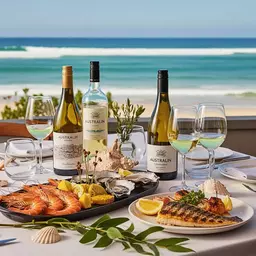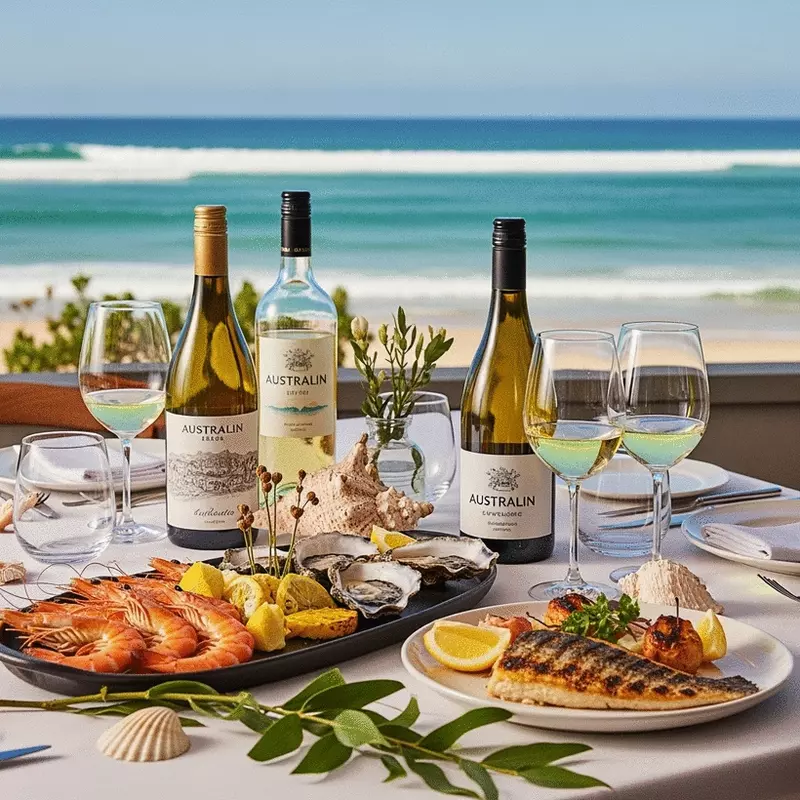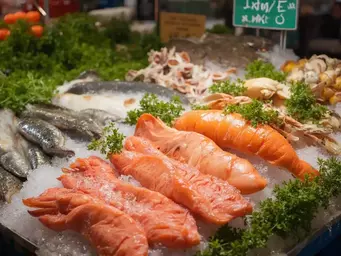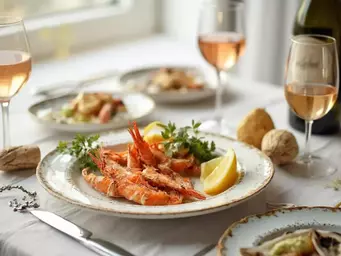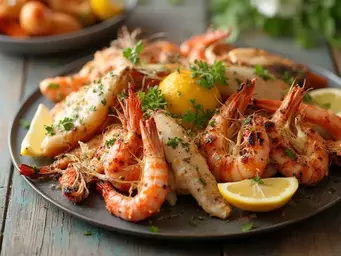Sustainable Seafood Shopping in Australia
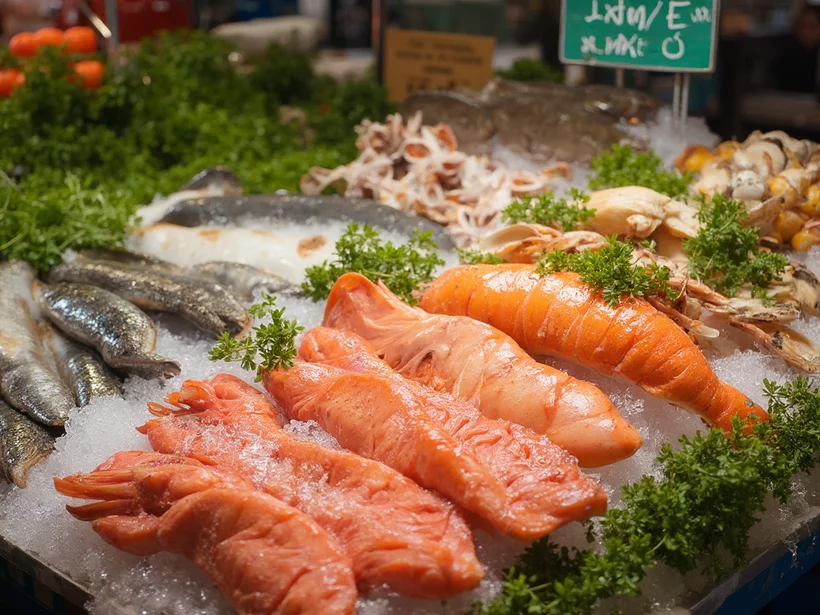
As we navigate our culinary choices, it's essential to consider the stories behind our seafood. How do our decisions impact the oceans and the communities that rely on them? This exploration into sustainable seafood not only satisfies our taste buds but also contributes positively to the environment.
What You Will Learn
- Sustainable seafood refers to fish and shellfish sourced in ways that maintain ocean health and support local communities.
- Choosing sustainable options helps preserve biodiversity and supports local economies.
- Consumer awareness is vital; check for certifications like the Marine Stewardship Council (MSC) to ensure responsible fishing practices.
- Participating in community-supported fisheries directly supports local fishermen and promotes sustainable practices.
- Understanding the differences between farmed and wild seafood helps make informed choices about flavor, sustainability, and environmental impact.
Key Pillars of Sustainable Seafood in Australia
Sustainable seafood practices are crucial for ocean health and community well-being. Below are the key aspects that define and promote sustainable seafood choices, ensuring a balanced ecosystem for future generations.
Defining Sustainable Seafood
Seafood caught or farmed in ways that maintain ocean health and community well-being, ensuring future generations can enjoy these resources.
Importance of Sustainability
- Preservation of Biodiversity
- Support for Local Economies
- Healthier Oceans
- Consumer Awareness
Why Choose Sustainable Seafood?
Choosing sustainable seafood is a commitment to reducing the fishing industry's negative impact on ocean health.
- Overfishing Prevention
- Habitat Protection
- Lower Carbon Footprint
AMCS's Role in Australia
The Australian Marine Conservation Society advocates for sustainable fishing practices.
- Policy Advocacy
- Public Education
- Research Initiatives
Farmed vs. Wild Seafood Comparison
Farmed Seafood
Accessible, often managed for sustainability (with monitoring of feed/habitat impact).
Wild Seafood
Richer flavor, sustainability depends on responsible fishing and seasonal availability.
Understanding Sustainable Seafood in Australia
As a passionate food enthusiast and culinary storyteller, I've come to appreciate the intricate world of sustainable seafood. But what does sustainability really mean in this context? At its core, sustainable seafood refers to fish and shellfish that are caught or farmed in ways that maintain the health of our oceans and the well-being of local communities. It’s about ensuring that our seafood choices do not compromise future generations' ability to enjoy these delicious resources. Understanding this concept is vital for anyone who loves food and wants to make a positive impact on our environment!
By choosing sustainable options, we support practices that protect marine ecosystems and contribute to the livelihoods of those who depend on fishing. It’s about crafting a culinary experience that honors nature while also delighting our taste buds. When I think of sustainable seafood, I envision not just a meal, but the entire journey—from the ocean to the dinner table.
Defining Sustainable Seafood and Its Importance
Sustainable seafood encompasses both wild-caught and farmed varieties, ensuring that they are harvested or produced in a manner that avoids overfishing and minimizes harm to the environment. This concept is incredibly important as it helps to maintain balance in our oceans, which are home to countless species and ecosystems. Have you ever considered how your seafood choices ripple through the environment?
- Preservation of Biodiversity: Sustainable practices protect various marine species and habitats.
- Support for Local Economies: Buying from local suppliers fosters community development.
- Healthier Oceans: Reducing overfishing helps maintain ecosystem balance.
- Consumer Awareness: Encourages informed choices among buyers.
As I explore this topic more deeply at The Yellow Tail Table, I’m continually inspired by the stories behind sustainable seafood—each catch with its own narrative of place, people, and practice. It’s essential we become advocates for these important practices, ensuring that the seafood we enjoy today doesn’t compromise the ocean's health tomorrow.
Why Choose Sustainable Seafood? The Environmental Impact
Choosing sustainable seafood is not just a lifestyle choice; it’s a commitment to the environment. Did you know that the fishing industry has a significant impact on ocean health? Unsustainable practices can lead to overfishing, habitat destruction, and a decline in fish populations. By opting for sustainable seafood, we actively participate in reducing these negative effects!
- Overfishing Prevention: Ensuring fish populations remain healthy for future generations.
- Habitat Protection: Sustainable methods help preserve vital ecosystems.
- Lower Carbon Footprint: Sustainable fisheries often use eco-friendly methods.
When we choose sustainably sourced seafood, we support the replenishment of marine life and promote biodiversity. This choice empowers us as consumers to drive change and protect our precious ocean resources.
The Role of the Australian Marine Conservation Society in Promoting Sustainable Seafood
In Australia, organizations like the Australian Marine Conservation Society (AMCS) play a crucial role in advocating for sustainable fishing practices. They work tirelessly to develop policies, educate the public, and conduct research that promotes ocean conservation. Their efforts resonate with my mission at The Yellow Tail Table—connecting food lovers with sustainable practices!
- Policy Advocacy: Engaging with lawmakers to create sustainable fishing policies.
- Public Education: Raising awareness about the importance of sustainable seafood.
- Research Initiatives: Conducting studies that support sustainable fisheries.
By supporting the AMCS, we not only advocate for sustainable seafood but also contribute to the broader mission of preserving Australia’s stunning marine environments. Together, we can ensure that our love for the ocean and its bounty continues for years to come!
Frequently Asked Questions About Sustainable Seafood
- What is sustainable seafood?
- Sustainable seafood refers to fish and shellfish caught or farmed in ways that maintain ocean health and support local communities, ensuring future generations can enjoy these resources without depletion.
- Why is choosing sustainable seafood important?
- Choosing sustainable seafood helps prevent overfishing, protects marine habitats, supports biodiversity, and contributes to the livelihoods of local fishing communities. It reduces the overall negative environmental impact of the fishing industry.
- How can I identify sustainable seafood?
- Look for certifications like the Marine Stewardship Council (MSC) or refer to guides such as the GoodFish sustainable seafood guide. Additionally, buying local and understanding the sourcing methods of your seafood supplier can help.
- What is the difference between farmed and wild seafood in terms of sustainability?
- Farmed seafood can be sustainable if managed responsibly, with careful monitoring of feed and habitat impact. Wild seafood's sustainability depends heavily on responsible fishing practices and seasonal availability to avoid overfishing and environmental harm. Both types can be sustainable with proper management.
- What role does the Australian Marine Conservation Society (AMCS) play?
- The AMCS is crucial in advocating for sustainable fishing practices in Australia. They engage in policy advocacy, public education, and research to promote ocean conservation and ensure the health of marine environments.
We Want to Hear From You!
What do you think about sustainable seafood practices? Have you made changes to your seafood choices lately? Share your thoughts below:
Summarizing Sustainable Seafood Choices in Australia
As we dive deeper into the world of sustainable seafood, it's essential to recognize the choices we make and their profound impact on our oceans and communities. Understanding what constitutes sustainable seafood ensures that our dining experiences at The Yellow Tail Table not only delight our palates but also contribute positively to our environment. Let's explore the key takeaways to help us make informed seafood choices.
Key Takeaways: Making Informed Seafood Choices
First and foremost, it’s crucial to know how to identify sustainable seafood. Here are some key points to remember:
- Check for certifications like the Marine Stewardship Council (MSC) which indicate responsible fishing practices.
- Choose local over imported seafood to reduce carbon footprints and support local economies, aligning with Australia's aquaculture industry's focus on sustainability.
- Stay updated on seasonal seafood varieties to enjoy fresh, sustainable options.
- Engage with suppliers who practice transparency about their sourcing methods.
By keeping these points in mind, we can make choices that not only enhance our meals but also protect our marine ecosystems. It's a win-win for both our taste buds and the planet!
Encouraging Sustainable Practices: Your Role as a Consumer
As consumers, we wield incredible power in shaping the future of our seafood industry. Every purchase we make sends a message about what we value. Here are some simple ways to embrace sustainable practices:
- Participate in community-supported fisheries to directly support local fishermen and their practices.
- Educate yourself about the origins of the seafood on your plate—know the story behind it! A great resource to start with is the GoodFish sustainable seafood guide.
- Advocate for sustainable practices by sharing your knowledge with friends and family.
Remember, every small effort counts! When we choose to support sustainability, we pave the way for healthier oceans and vibrant fishing communities.
Understanding the Difference Between Farmed vs Wild Seafood
When it comes to seafood choices, understanding the distinction between farmed and wild seafood is fundamental. Each has its benefits and drawbacks:
- Farmed Seafood: Often more accessible and can be managed for sustainability, but it may sometimes require careful monitoring of feed and habitat impact. The aquaculture industry in Australia, for instance, focuses on sustainable growth.
- Wild Seafood: Generally considered to have a richer flavor profile, but sustainability hinges on responsible fishing practices and seasonal availability.
At The Yellow Tail Table, I often find inspiration in both types of seafood, depending on the season and the dish I’m preparing. By knowing the differences and choosing wisely, we can enjoy the best of both worlds while remaining conscious of our choices.
Recap of Key Points
Here is a quick recap of the important points discussed in the article:
- Sustainable Seafood Defined: Sustainable seafood is caught or farmed in ways that maintain ocean health and support local communities.
- Environmental Impact: Choosing sustainable seafood helps prevent overfishing, protect habitats, and reduce carbon footprints.
- Local Support: Buying local seafood fosters community development and supports local economies.
- Consumer Awareness: Understanding certifications and being informed about seafood sourcing leads to better choices for the environment.
- Advocacy and Education: Support organizations like the Australian Marine Conservation Society to promote sustainable fishing practices.

